Money, strategy and our Regional Land Transport Plan – your submission guide
Any tax money for Wellington region transport stuff relies on this budget bid story. Submisions are open and close Monday 24th June. We’ve gone deep so you don’t have to – and if you’re in a rush, the Typing Cat has your back!
This post has
1.Whys and wherefores
2.Submission guidance mirroring the consultation survey: part 1, and part 2.
3.The typing cat! if you’ve only 5 minutes, scroll (way) down to your faithful friend.
1.Whys and wherefores
This section talks through what it’s about, and lays out the kaupapa that this guide is advancing.

What is the Regional Land Transport Plan (RLTP) and why should you care?
The RLTP is one of the dynamic interfaces between central and local governments that are a defining feature (bug?) of New Zealand’s governance.
When Waka Kotahi is considering whether to give any tax money from the National Land Transport Fund (NTLF) to a region’s transport projects, the RLTP is the thing they use most – behind the Government Priority Statement on Transport (GPS). (Which, FYI, says how much NLTF money will be available for different “activity classes” (ie how much of the NLTF is allocated into the different buckets of money tied to particular transport inputs, like state highways or public transport or walking and cycling)).
RLTPs are legislatively required for this purpose – and to force some strategic planning at a regional level. A region’s RLTP is essentially a budget bid for transport co-funding from the central government, for around half the PT, walking and cycling infrastructure projects they build and maintain, and the operating costs for the region’s PT. But it’s also the story a region tells about what it wants for its environment, people and economy over the next few decades, and the transport projects it reckons will bring that to life.
So, be it better bussing in Wellington City, a fancy new road in the Hutt, or better train tracks in Kāpiti – if a project’s not in the RLTP, there’s no hope of central money. It’s local rates only, and good luck with that.
If there’s lots of other good budget bids being made around the country (and of course there are), there’ll be a tussle for cash.
This funding round, those tussles will be extra intense for things like walking, cycling, micromobility and public transport, thanks to the government’s 2024 GPS. This shifted a lot of money out of these buckets (which already got much less) and much more into new roads (while still leaving many of the RONS unfunded), and tightening up the definitions of what’s allowed in a really counterproductive way.
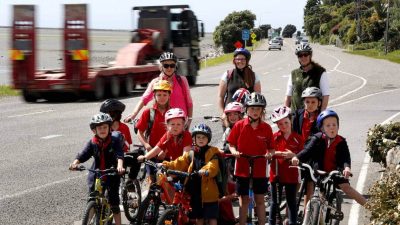
OK, what is this submission about?
This is the mid-term review for the RLTP that was created in 2021. While it’s a review of an existing document, since it was made we’ve had two major cyclones, an incredibly wet summer, and a new government’s new Transport GPS (see above). The budgets here are good for six years, so three of those have already passed and this round will end in 2027, when a new RLTP will be drafted. Some projects are already partially underway, or have budget committed, but this review is designed to allow the money flows to adapt.
While the heart of the RLTP is a proposed list of transport things to fund (see below), it’s not a done deal.
Yes, each activity’s “lead organisation” (usually a council/s but sometimes Kiwirail or DoC) must have already set aside money in their own budgets for these activities. But New Zealand also doesn’t have a fixed envelope for transport spending (which is a bit unhealthy). So, theoretically at least, more things could get funded beyond what one might expect. The RLTP story will also useful for that scenario – for example if the government decides to create a new fund. (It’s unlikely this time, but you never know).
Having said that, central government co-funding of local transport stuff is overwhelmingly NLTF money, and via these RLTPs. While there’s no bright-line cut-off on the RLTP list, we all know what “deferral” or “unfunded” can sometimes mean: staying in limbo forever. Conversely, If a region makes a really good case for something, that thing is likelier to get to the front of the pack for NLTF money.
The bigger “transport future” story for our region
Zooming out a bit, the RLTP is really powerful because it’s the nexus between the nice vibes and maps of non-statutory documents with regional planning intentions, and the business-end of what we’re actually spending public money on.
For example, there’s a sequencing section of it, which is where (hopefully) agencies sort out things like if we increase X rail line performance to Y level and we’re building X,000 homes within walking distance in the next 5 years that’ll be good. Or conversely, if we don’t get rail line performance to X by the time there’s new homes, that’s bad.
So, what “bigger transport future” stuff is good to call for?
The bigger picture of this RLTP – which is hidden in plain sight – is that in 2024-27 there’s a huge cost for Wellington’s towns and cities, including a devastating opportunity cost, of failing to keep our eye on the ball of good public transport infrastructure and services, because we’ve told the government we want shiny new roads instead.
There are many reasons why we need to be excited about basic rail and buses, and cheer for them in the RLTP:
- Firstly, because taking our foot off the funding pedal will not only mean we fall at the last hurdle of catching up on the rail maintenance backlog created during the privately-run, cash-stripping years.
- Secondly, we will also fail to start making our rail run properly in future – never mind actually improving services – and we will flub on the strongly-climbing bus patronage (see p44) that’s continuing to climb despite roadworks and more working from home.
- Thirdly, taking a foot off the gas will mean our towns and cities will lose the opportunity to get developers building lots more great homes and neighbourhoods for more people to live, conveniently within an easy walk of rail stations and bus stops. Think about it: if as a developer you can’t be sure that your future development will be able to advertise itself to buyers as “20 minutes’ train ride to Wellington city” or “walkable to the local school”, you’ll not risk your hundreds of millions developing there because that big drawcard isn’t certain.
- Fourthly, if we start to disrupt rail services badly because we’ve fallen off the maintenance horse, the tens of thousands of people currently using trains will start to travel other ways – meaning they’ll flood onto the roads. (And all those huge logs from the Wairarapa will have to travel by logging truck. In amongst family hatchbacks. Over the Remutaka Hill. No thanks).
- Finally, by encouraging NZTA to build big expensive roads in greenfield areas, especially for “opening up for housing”, we’ll worsen the unaffordability crisis our region has made for itself. This crisis is thanks to the low-density land-use of the classic suburb, where it costs vastly more – to keep the street lights on, the sewerage working, the roads sealed and so on – than the rates those areas bring in. (And where, ironically, it’s virtually impossible to live well without driving heaps every day – so you can’t live a full life if you’re too young or old to drive, or otherwise can’t (or don’t want to) own and run a car with all its costs (and emissions).)
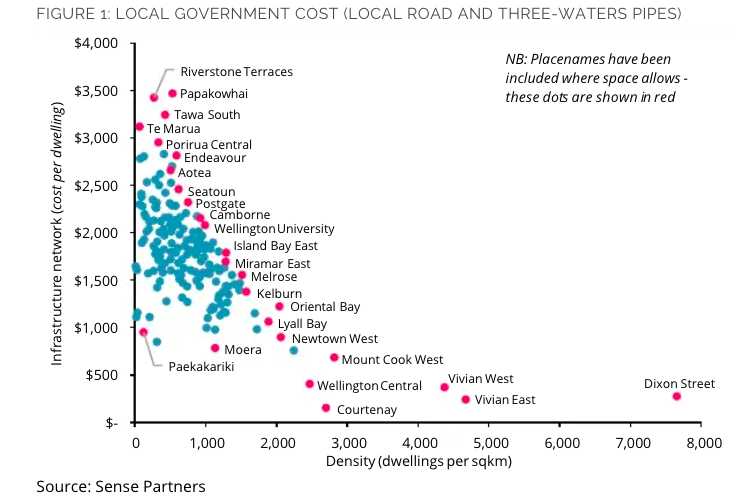
click image for source.
The upshot
All this is to say that if you care about Wellington region people getting to live in towns and cities that are work better than now, you must help make sure our region’s transport story speaks loudly and clearly to this government and the next. (Even if you don’t care so much about that, but don’t want to see precious resources wasted, it’s the same story.)
The story in the RLTP needs to say unequivocally that Wellington region people aren’t here to waste precious transport funding on stuff that’s going to stitch us up; instead we want transport stuff that’s going to help us – and more of us – enjoy better places to live.
We may not (won’t) get all the things we want but we mustn’t have things that will expensively do actual harm to the region. We must give councillors the fortitude to do the right thing, hence the spirit of this guide: voicing support and opposition through everyday people’s excellent submissions. There’s more on the tactics of this approach below.
2. How to use this guide
The GWRC submission form is straightforward and quite short: an “about you” section, a bit about the region’s five overall transport investment priorities (part 1), and input on relative importance of the 30 “significant activities” that we’re seeking money for from the NLTF (part 2).
We recommend the latter (part 2) be the main priority for your time. You’ll be feeding back on the initial placements that the Regional Transport Committee (all region’s councils represented, with GWRC as the secretariat) has come up with. These can shift based on public feedback. Especially if councillors hear many voices align on the same shift
Following an intro section, there’ll be a breakdown of each of the things we’re being asked to submit on, what Talk Wellington’s recommendation is and why – in line with its kaupapa of more sustainable, prosperous, fairer towns and cities.
We recommend you keep this guide open on another screen and read each question’s breakdown as you come to it. But if you’re short on time, and trust the Talk Wellington kaupapa, scroll to your old friend Typing Cat.
3. Submission guidance: survey Part 1 – Weighting of the five “Transport Investment Priorities”
This is the first section you’ll be asked to weigh in on. These five categories (also called “Strategic Objectives” in some tables, so here called the Strategic Objectives) define the big overall priorities, and gives them each a percentage-based weight. They’re what the Wellington region considered (in 2021) to be the point of transport: the reason people (and goods) bother to move from one location to another.
There’s been some excellent work walking the line between top-down, Transport GPS objectives and the bottom-up RLTP strategic objectives. Wellington can genuinely say Yes, the Wellington Region is aligning with the government’s Transport GPS.

The RLTP strategic objectives’ weighting shapes the ranking of the top 30 “significant activities” included in this mid-term review via some mathematical point-assigning (see next section), but the creation of the rankings is not purely maths-based. (There’s already been two rounds of moderation by people (various agencies’ officers, and the councillors of the Regional Transport Committee (RTC)), and our feedbck will also be used as a guide to shape the final list in our funding bid. More on this in the section on Part 2).
For each Strategic Objective, you will have the option to suggest the priority’s current percentage should be increased, decreased, or stay the same. These all need to add up to 100%, so anything that increases requires a decrease elsewhere.
What impact from your feedback on this?
There might be some going back and reworking of the list. However, with the current GPS, it’s not the priority use of your time unless you’re really passionate about getting the RTC to take another look at the list of “significant activities”.
Submission guidance:
We recommend ticking “it’s about right” for all.
Frankly, they’re all OK. The shift to greater emphasis on resilience is good, for all that it’s come from increasing PT capacity. It was well consulted on last year by GWRC in their pre-engagement for the RLTP review. (Hot tip: if you’d like to be involved in these types of engagements in future, there’s a ticky box at the end of the submission form).
This resilience emphasis aligns well with Te Waihanga’s approach: they endorse NZ generally being a bit less wild about “building new things” and a bit more committed to “looking after things we have”.
4. Submission guidance – survey Part 2: Ranking the Top 30 “prioritised significant activities”
This section has three parts to help your awesome submission:
- four FAQ
- the impact of public feedback
- our take on the proposed list of Significant Activities.
FAQs
These complement the useful FAQ developed by the RLTP secretariat.
Q1: How did they get to the initial rankings that we’re commenting on?
A1: a lot of work:
- The RLTP secretariat (Greater Welington staff) did a lot of engagement in early 2023 for people’s top 10 priorities for the region
- Sponsor agencies (also referred to as “lead organisations”) submitted programmes or bundles of projects (“activities”) that are seeking “significant” new funding – i.e. more than $2 million. (A sponsor under the Land Transport Managmeent Act can be a council or Waka Kotahi, or Kiwirail or even DoC.)
- The sponsor had ranked each of their activities “Low, Mid, or High” for how strongly they reckon the activity delivers on the 5 overall investment priorities (strategic objectives).
- The sponsor also identified the primary, and secondary investment priorities (strategic objectives) they feel the activity delivers on the most, and the relevant percentage-based multiplier is applied to the previous score.
- The resulting list got two rounds of moderation – by officers, then councillors – to see if the process has generated anything that seems crazy (or “not what we want”). While both moderations are discoverable, councillor moderation is at a formal Regional Transport Committee meeting so it’s publicly reported anyway.
- It then arrives with us the citizens to give feedback – in this draft review! (And yes our feedback has impact – read on.)
To reiterate: this is a funding bid, and the relative priority of activities is a mechanism to communicate to the world, with some structure, something that’s a big picture: what’s important to Wellington in terms of big things we want to achieve, and the (big, expensive) transport activities we deem most important to get delivered in the next 10 years, and why.
Q2: Do projects compete within the NLTF – so if we have too many “trains” activities within one region, they’ll fight each other?
A2: Activities get funded from different “pots” or “buckets” of NLTF money (“activity classes”) so programmes within Wellington’s RLTP list are not necessarily competing against each other. (Unless they’re the same type of thing which could only draw from exactly same bucket of NLTF (e.g. two state highway-and-local-road combinations with same emphasis of objectives).)
Ranking does matter in the big picture as an indicator of how much our region cares about the activity vs others do – because, as discussed, activities are competing against other regions’ equivalent activities within activity class. And noting (thanks to the new GPS) that some activity class pots are now much smaller and much more restricted (e.g. walking and cycling) that’s extra tough. Especially for those kinds of projects, the rankings are worth paying attention to and commenting on.
Q3: I thought X was funded already, so what’s it doing in the RLTP list?
A3: Some other stuff is included that’s part of the transport picture but is not (much) NLTF-funded. If it’s a major project in the Wellington region, it’ll get in the RLTP even though it may not be seeking (much or any) NLTF.
For example, some rail projects and the Melling interchange. The latter are part of Riverlink/Te Awa Kairangi and paid for out of the Roads of Regional Significance Fund (formerly the NZ Upgrade funding). So there’ll be little (if any) NLTF going into that aspect. But it’s still in the RLTP because it’s a major project that’s underway in the Wellington region.
(You’d be forgiven for thinking that the Riverlink walking and cycling bridge, connecting the relocated Melling Station to Hutt City centre, was funded in the NZUp too because it’s equally important – being the only aspect of Riverlink that serves people travelling in the fresh air, under their own steam. But apparently not, so it needs NLTF to top up its co-funding from Hutt City Council.)

Q4. Where’s the walking?
A4. Living Streets Aotearoa reckon that
“A major flaw in the draft RLTP is the lack of prioritisation of safe, separated walking infrastructure in urban areas. Walking is relegated to a component of other projects, and thus, any walking improvements are dependent on the ranking of projects that are mainly about other modes.
A package of walking improvements – involving improving the extent, quality and safety of footpaths, plus continuing the installation of raised pedestrian crossings at locations that prioritise the safety of pedestrians – should be included in the top 10 ranking.”
This isn’t currently in the top 30 at all, so it’d need to be created.
We fundamentally agree, but believe also that one good thing about this RLTP is that it includes walking projects bundled with adjacent RONS like remora fish on a shark. While the components will be split up again for consideration by Waka Kotahi, the overall higher ranking will provide a sort of momentum for the walking projects (which, remember, have to draw from a different and much-reduced activity class pot than their RONS shark does). With that momentum from their shark, they’ll be able to swim faster than other regions’ walking projects towards that meagre funding pot.

An aside: politics x objective analysis
If in the last few years you’ve followed transport-planning processes in Tāmaki Makarau, you may be wondering where to find Wellington’s equivalent of the Auckland Transport Alignment Project (ATAP), and why you haven’t heard anything about it. And the answer is: well, there isn’t one. We’ll make a post about what that means, but in short: without an ATAP process the Wellington region is much more prone to this, because we don’t have the transparency a WTAP would provide. If you’re bothered about that (quite reasonably so!) we recommend ticking “I’d like to hear about future RLTPs” at the very end of the submission form.
How much impact does public feedback on rankings actually have?
We see from Q1 that the officials and councillors have done lots of work – but your feedback is meaningful! There’s two main reasons: democracy, and the bigger picture.
Your feedback = democracy power
Within the RLTP list, councillors on the committee will move things around if they think there’s some strong democratic energy for it. Unfortunately for the future of our region, lots of people who might submit (and lots of councillors on the RTC ) come from places dominated by car-centric urban form. Which, no surprises, makes those submissions very car-oriented and prone to saying “Yes build those great big new roads, that’ll make traffic better / open up more housing / drive more jobs”. If your feeling is different to that, then it’s well worth adding your voice.
The bigger climate is that nothing has changed local government’s short-term desperation for central money, and councillors feel this as much (if not more) than the rest of us. Until local / central funding and financing is improved (there are moves, which sound good but too late for this RLTP), the attitude from even the less car-focussed RTC councillors is likely to be, “Look, they’re giving money to Wellington region – let’s just shut up and take it, not quibble about what it’s for!” That impulse, plus the central government’s roads-and-private-vehicles-heavy GPS sets the stage pretty thoroughly.
Fundamentally, both these impulses are terrible bases for decision-making about major transport investment. But because councillors are primarily democratically-driven creatures, if they hear lots of citizen voices calling for a No to the big new roads and Yes to good spending, they’ll be emboldened. Councillors can put a motion to shift activities up or down (such as Councillor Ponter’s successful motion that the regional cycle network be moved into the top 10 – good stuff!)
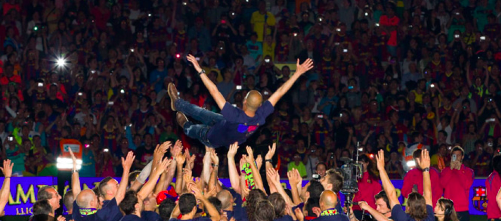
Your feedback: helping our region’s story be bigger and stronger
One thing you’ll hear about the meaningfulness of public feedback is that the Wellington RLTP must reflect the current GPS on Transport. This argument goes that because the die has been cast and there’s no longer the money in the “buckets” that fund the kinds of stuff Wellington is good at and wants to get better at (public transport, but also walking and cycling), there’s no point pushing upstream with a different set of priorities.

Moreover, the GPS has a sort of extra intensity this time, as it’s coming with some real overreach by central government into local government territory (amongst other examples of undermining the election campaign’s “localism” rhetoric).
This is a fascinating time to observe the interplay between central and local government, each with some (valid) case that they have the mandate to shape a region’s transport network in a certain way.
Before we say why it’s good for our RLTP to be firm – politely but substantively – it’s worth noting the RLTP secretariat have done a grand job of demonstrating the Wellington RLTP’s respect to the GPS, (see Part 1 commentary above). So we the citizenry can feel comfortable pushing for a good-practice, substantively-sound trajectory for our region.
Fundamentally, governments (and councils) come and go, but a region’s truly strategic story for its development – and the transport investments therein – must be much bigger and more enduring than that. The trajectory of infrastructure investment massively determines urban form, for 50-years plus.
A region needs to have a substantively sound trajectory of change for itself, and have identified the necessary investments in major infrastructure to take them along that trajectory. We need to be thanking our earlier selves (and receiving our kids’ thanks) in 30 years’ time, not suffering regrets for our short-sightedness.
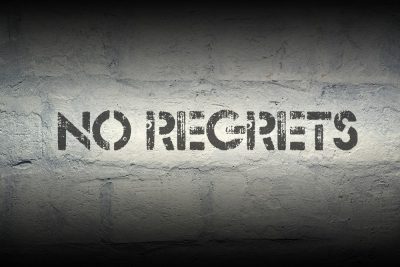
(Don’t just take our word on this, take it from Te Waihanga the Infrastructure Commission.)
A no-regrets (or no-big-regrets) approach is about not stitching up the next generation with financially unsustainable assets, and not pushing urban development and land use in the wrong directions, and (because money’s always tight) not condemning good investments to the never-never as opportunity costs. And while we can say what we value, our budget (like this RLTP, a funding bid for transport money) will show what we really value.
With a substantively sound trajectory for a region, successive governments and councils can pluck particular initiatives from the story to advance during their administration. But there mustn’t be anything in the story that’s going to do harm to the region, which (like the layout of most of our new suburbs) we’re deeply regretting in 20 years’ time. The RLTP needs to flex its muscles on this because land use is barely touched on and our Future Development Strategy is far too “good vibes… expectations… yeah. maps… ” to be of real use here.
So, in your submissions it’s absolutely worth encouraging our RLTP to be very firm and clear about what we do want, and don’t want from central transport money. How to do that?

The Ranking! Submission guidance
Since the submission form keeps itself short and simple (which is good) it doesn’t have space to mention what each project actually is. For that, you need to reference the 140+ page draft of the RLTP and its various tables. So, for your ease we’ve included those descriptions plus our recommendations together so you don’t have to be flicking back and forth between two documents. With 30 projects, some containing multiple activities, it got pretty long, so we’ve separated it out to this post here.
On there, we’ve included the official description of the project from the RLTP documents alongside our interpretations (where necessary) of what it really means, plus our recommendation on its ranking. Our interpretations and recommendations are based on the Talk Wellington kaupapa, so YMMV. When submitting, what’s important is for you to consider what priorities matter to you, your whānau, and community.
Without further ado: our recommendations. There’s really only One Big One (it may not be what you think!)
Some overall thoughts on the two biggest “sharks”, and what we recommend be changed
While there’s no hard-and-fast cutoff for funding likelihood in an RLTP – no bright line in the list above which “this’ll definitely get money” – a region makes a really strong point by having things in the top 10 versus in the 20s or 30s. Much of the draft RLTP’s top 10 is good stuff and we’re recommending they stay where they are.
The biggest proverbial fish to fry – the ones dominating the funding landscape for Wellington – are the two “Roads of National Significance” – two bundles of stuff pushed hard by the National party when campaigning (one in particular by Chris Bishop).
ONE BIG FISH: ADDITIONAL MT VIC TUNNEL, GRADE SEPARATION AT BASIN RESERVE
(Wellington RONS 1) Currently at Rank #5

Perhaps surprisingly for some, we’re recommending this bundle stay where it is.
Longtime readers may notice this is a change from our previous “no grade separation”, because the collapse of LGWM and the stated priorities of the current government have made us look at things a bit differently – in our continued pursuit of way better public transport to enable lots of good urban development enabling way more people to live awesome lives in great neighbourhoods, we must pick our battles.
We know separation of public transport east-west vs north-south at the Basin – to give it a “free run” – is absolutely essential for smoother, faster trips by public transport (like ~10 minute time savings on the No. 1 route), and grade-separation is a guaranteed way to do that.
Another hole for PT to go through Mt Vic to the East, while unnecessary if we hugely maxed up on citywide travel demand management and had light rail, is necessary if we’re not doing those things soon.

So grade-separation and a tunnel, while built for general traffic to state highway standards, can be easily repurposed to take buses and Bus Rapid Transit (really big buses). We’re advised that it’s very unlikely that any of this infrastructure could be built vindictively – to prevent buses and BRT using it in future – because, helpfully, BRT and buses are like great big freight trucks in terms of their road weight and cornering radius. And when the administration changes (or when we get the Unicorn: the independent infrastructure entity that depoliticises big investments), we can roll out those buses connecting the good bus-priority network we’ve been doing in the meantime (yes, on the Priority List).
RoNS 1 is the “least harm Wellington RONS” that’ll mean that while we’ll embody a lot of carbon in some Big Infrastructure civil works, the result will move us in the right direction in a few years’ time.
Our recommendation
Rank #5: Wellington Region Road of National Significance (1) should be selected as “It’s about right”
However! In the Any Other Comments box at the end of the form you could add something like:
Wellington RONS 1 should be done to maximise public transport and active mode options along this route.
OTHER BIG FISH: PETONE TO GRENADA, CROSS VALLEY LINK, CROSS VALLEY CONNECTIONS (Wellington RONS 2) Currently at Rank #8

Petone to Grenada
Yes, the region needs much better connection between the Hutt Valley and the western settlements. Yes, there’s a risk of vehicle traffic being unable to get to the Hutt Valley in a major earthquake. And yes, SH58 leaves a lot to be desired (not least that it winds around the vulnerable Pauatahanui Inlet). Yes, councils are under heaps of pressure (rightly) to allow more homes, and a land-banking landowner is very excited about hilltop greenfield development.
But is the answer to all these “a massive new road through very steep hills”? Nope – at least not without doing a lot more to justify it.
There’s more work – namely more good-practice intervention strategy, more cunning, and more holism – needed for these challenges. What’s been put up so far for P2G falls far short of justifying the kind of spending on business cases and implementation that’s proposed (the timing and phasing table shows the project as starting in true from 2030, spending over $100 million by then), let alone the actual delivery.
The RLTP proposal spending is targeted to these, with some fundamental wrongnesses, because that new road-building is someones’ (plural) preferred solution looking for a problem. Right now, even with the prospect of other people’s pension funds or tolling paying for it, we do not have any acceptable basis for jumping ahead.
We recommend the collective agencies do much more work, focussed on how to achieve proper outcomes besides “traffic must flow” or “our poor landuse planning will generate loads more traffic, which must flow”, and “doing the right things is unpopular with the voters”).
The Cross-Valley Link (and Cross-Valley Connections)
The Cross-Valley Link is, at its heart, a big new road to fix peak-time traffic congestion (cross-valley-floor journeys). It’s a (bad practice) “solution” to which people have jumped instead of doing all the other things first, as per the NZTA Intervention Hierarchy AKA good-practice infrastructure strategy. And it talks a good talk on resilience, without addressing the resilience elephant in the room.
But Hutt City leaders love the Cross-Valley Link! It’s a big new road which they can declare (with fingers crossed) will “solve” a persistently aggravating problem: people yelling at them about the cross-valley traffic while invariably driving in it (see p6). Bonus, local leaders can say “the government’s paying for it, not us” (as it would be paid for by the nation’s taxes, not local rates).
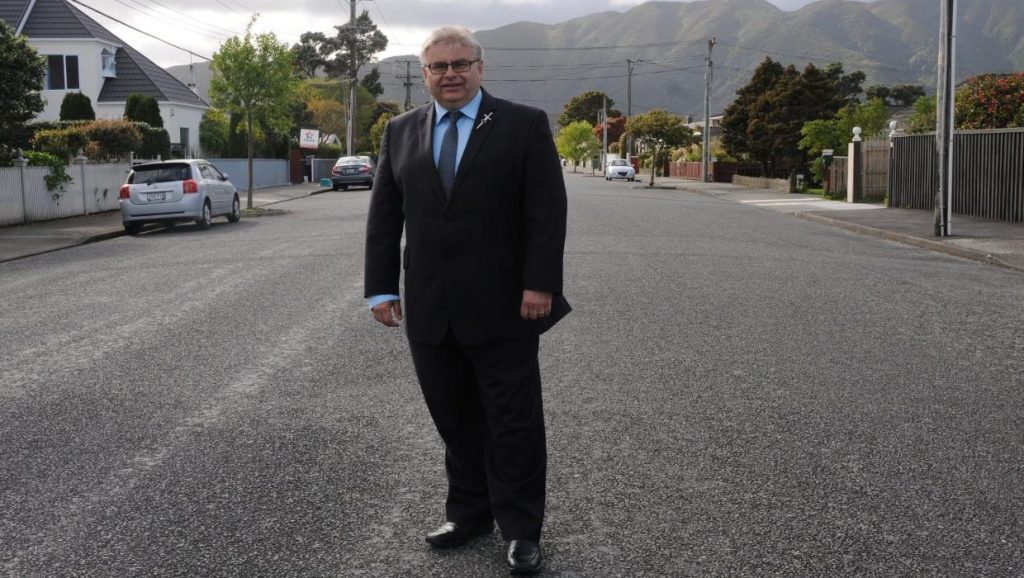
Leaders who push this narrative are betting on the fact that while they’re in the big chairs now, by the time they are leaving office (optimistically, 10-15 years from now) the traffic situation will still be in the brief honeymoon period before the short-term traffic-congestion improvements from the finally-finished big new road start to disappear (as they invariably do when you talk big talk and rely heavily on a big new road to fix your congestion). And those leaders hope their reputations will retain the glow, while it’s their successors who’ll have to deal with the depressingly swift arrival of “we paid all that, and traffic’s already just as bad as it was!”
As you can guess, while the Cross Valley Link is getting local Hutt leaders lots of popularity, it just doesn’t stack up. We’ve identified three glaring “um, what?”s which undermine this bid.
Firstly, it fails the intervention hierarchy
Hutt City has patently not exhausted the potential of Step 1 in the intervention hierarchy, integrated landuse and transport planning. They even say in their own description that the Cross-Valley Link – a big new grade-separated four-lane road across the fully urbanised valley floor – will “unlock housing growth between SH2 (near Petone/Lower Hutt) and Lower Hutt’s eastern hills” – on the selfsame valley floor.
Deep breaths, and let’s try to follow this logic for a moment. This big new road is supposed to “unlock housing growth” on the fully-urbanised Te Awa Kairangi valley floor (despite all the land takings needed for itself), because… um… all those new homes will be people driving all the time, who come to live in the lower Hutt Valley not because there are great walkable family-friendly neighbourhoods but …because there’s now a big new road to drive on (which cuts right through those neighbourhoods with a giant motorway-esque berm). Apparently. Yet somehow despite all the delighted driving from those new residents, it’s going to fix the congestion?
And even more traffic-engineer-friendly steps in the intervention hierarchy have been ignored before jumping to this Big New Road solution. Look at Hutt City’s track record on travel mode shift and travel demand management (TDM) for the lower valley and … you’re laughing (or crying). They’ve even failed to do the absolute minimum: make better use of the existing road space of Petone Esplanade. All this time, this apparently crucial for transport and intolerably congested arterial that’s begging for more space has had… private car parking, and an enormous, unusable giant grass median.
In terms of those “do firsts”, TDM and mode shift, the Cross Valley Connections looks at a glance like it might have some good stuff. But look closer and while there’s a lot of great talk, you’ll see that a lot of the (paltry) $200-odd million in the “Wellington RONS 2” package is going to be gobbled up very quickly by making Gracefield/Wainuiomata hill road intersection slightly less of a deathly hellscape. And by the description’s own admission: “further scope refinement may be required if national transport priorities change.”
Secondly, it’s weak on resilience
Resilience, too, has its hierarchy of interventions, and reducing exposure to a dangerous natural phenomenon (like crashing waves) reduces the hazard. For Petone, reducing exposure to the rising waters means some really big scary challenges – like how to protect or move all the valuable stuff we’re accumulating across Petone (just look at that western end of Petone!). That’s extremely intimidating. So at least let’s do good exposure reduction om a smaller scale, way more easily, by getting fewer people making cross-valley movements by driving private cars onto Petone Esplanade.
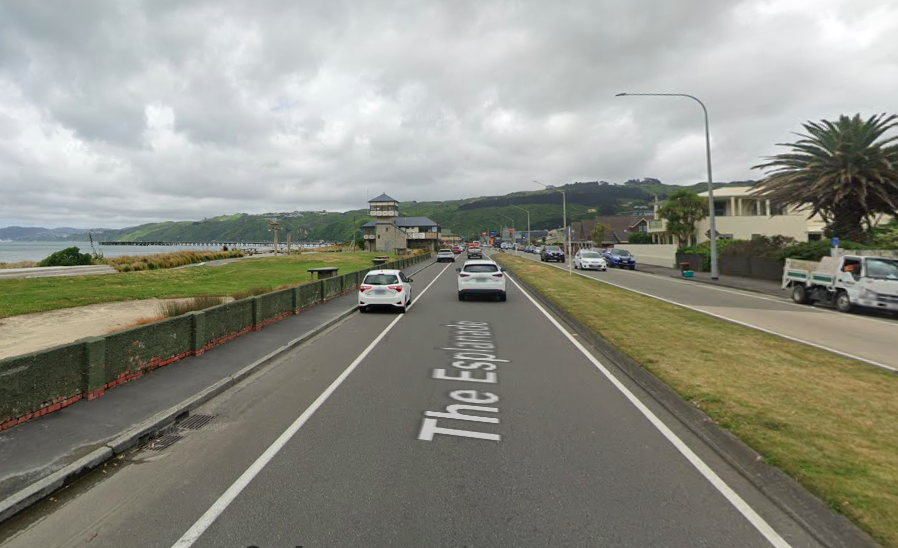
And here we are, back to the boring, systemic stuff of better-integrated landuse and transport; of circulation plans and mode shift; of eliminating the need for people to travel so much because you can meet your daily needs by “popping down” to a neighbourhood centre, on foot or scooter or bike, or hopping on a short bus trip within your town.
Yes, this is annoyingly systemic, really complex, triggers the psychology of loss and fear, and resists ribbon-cutting ceremonies. But we don’t get to essentially ignore it, and say “we must have a new road, there’s no other reasonable option”.
Thirdly, the joining-up doesn’t… seem to join properly?
We’ve not seen enough detail about the joining-up between Petone to Grenada, Cross-Valley Connections (which seems to exclude the actual cross-valley link) and the Cross-Valley Link itself, but what we’ve seen seems really weird connection-wise for people driving (yes, those who are the first-class citizens in all the thinking to date). It seems there’d be some additional “multi-modal connector” somewhere further north (Wakefield Street?), or somewhere else? In which case there’s some seriously gnarly roadbuilding of giant Spaghetti Junction style flyovers to connect the P2G / SH2 / CVL. At what point do we go “hold up traffic engineers, y’all need to step outside and get some fresh air. This is getting out of hand – and remember it’s scarce public money”?
Our recommendation
Rank #8: Wellington Region Road of National Significance (2) should be selected as “This shouldn’t be included in the significant activities list”. Yes, they should take it out altogether and go back to a much bigger, better drawing board.
At the end of the survey, in the “any other comments”, we suggest you say something like:
- The Wellington RONS 2 package should be removed from the list and turned into a proper multi-agency investigation that focuses on accessibility (not mobility) in the valley vs coastal settlements, and takes an holistic (good practice) approach to resilience, rather than jumping to a preferred infrastructure solution.
- This investigation should use best-practice decision-making principles for infrastructure including being very clear about the problems it’s seeking to address, following the established NZTA intervention hierarchy, and having landuse and transport planning tightly hand-in-glove.
- This investigation should think holistically and region-wide about east-west movement and accessibility (which are different!) with a focus on maintaining genuine quality of life for people during natural disasters. It should avoid lockin to the very high maintenance costs of car-dependent, low-density greenfield in hilly land, and it should maximise the growth of higher-density, accessible neighbourhoods that are more self-supporting (a key element of resilience).
- Resilience spending, like all other spending, needs to be rigorously invested. We mustn’t be ignoring the need to reduce people’s and homes’ exposure to the hazards (yes, managed retreat, but also reducing dependency on Just One Road), just because it’s politically unpopular.
So, that’s the two biggest fish.

What about the other 28 projects?
To sum up, all the other projects we’d say “yeah nah, six of one half-a-dozen of the other… about right”. There’s lots of pros and cons but all of them are more noise than signal for most of us ordinary folks who don’t have hours and hours to spend poring over the list.
We’d suggest – having made the RONS points above – you tick “It’s about right” for all the others and you’ll have done a great job of feedback on the Significant Activities list.
Finally, we’d encourage you to tick two things on your submission.
- Tick Yes I’d like to speak to my submission. Even by zoom from work, even (especially) by zoom from home with your baby on your shoulder, real people speaking in real time to councillors is vastly more potent than just writing. Councillors are the first to say this! And they try hard to be nice, even if they disgree with you, because they know how important it is that people come speak. Talk Wellington can help you if you’d like encouragement or hot tips – get in touch.
- If you’re a bit dismayed by how complex (and rather short-term, disconnected from landuse etc etc) this process has been, you could take part in focus groups or other engagement for designing the process for future RLTPs. If you’re keen on this, tick “inform me about future RLTPs” in the submission form.
However, if you do have some hours to swim around in more detail on all 30 projects, you can see our detail post here…

TL;DR option for people with 5 minutes max
If you’re short on time, and trust the Talk Wellington kaupapa, use the below template, filled in with your own details, to make a submission via email instead at gwrt@gw.govt.nz. Just make sure you do it before closing – 5pm on Monday 24th June!
Important: please tutu with wording so it’s in your voice. It’s your submission, we’re just giving you a leg-up!
We’ve made it quite plain-text for easy copy-paste, but the submissions are are parsed by real human people rather than a machine, so don’t worry too much about the formatting and the substantve questions are all optional so feel free to only include what you like.
[begins]
Kia ora,
I am writing in submission for the public consultation on the Wellington Regional Land Transport Plan 2021: 2024 Mid-Term Review. Please find my responses below.
I would like to speak to my submission.
I would like to be contacted about future RLTPs.
Thank you, and feel free to get in touch with any questions.
What is your full name?
What is your email address?
Gender: how do you identify?
(optional)
Where in our region do you live?
Which age group do you belong to?
optional
Which ethnicities do you identify with?
optional
I am submitting as:
An individual
Regarding the transport investment priorities, I would like to submit the following responses:
Public Transport Capacity (weighting 30%)
It’s about right
Travel Choice (weighting 20%)
It’s about right
Strategic Access (weighting 15%)
It’s about right
Safety (weighting 15%)
It’s about right
Resilience (weighting 20%)
It’s about right
Regarding the 30 prioritised significant activities, here are my responses on their current rankings:
#1: Rail Network Resilience
It’s about right
#2: Completing Metro Rail Resilience and Capacity
It’s about right
#3: Metro Rail – Developing and Enabling Future Capacity
It’s about right
#4: Wellington Rapid Transit Bus Corridors Programme
It’s about right
#5: Wellington Region Road of National Significance (1) – SH1 Mt Victoria Tunnel and Basin Reserve Upgrades
It’s about right
#6: National Ticketing Solution (NTS)
It’s about right
#7: Regional Cycle Network
It’s about right
#8: Wellington Region Road of National Significance (2) – Petone to Grenada and the Cross Valley Link
This shouldn’t be included in the significant activities list
#9: Asset Control – Depots and Public Transport Assets
It’s about right
#10: Riverlink – Te Awa Kairangi Improvements
It’s about right
#11: Wellington Region Resilience Programme
It’s about right
#12: Public Transport Accessibility Action Plan Programme
It’s about right
#13: Bus Hubs and Layovers
It’s about right
#14: Access Kenepuru (new phases)
It’s about right
#15: State Highway Value for Money Safety Improvements Programme
It’s about right
#16: Bus Network Growth to Meet Public Transport Demand
It’s about right
#17: Wellington Regional Hospital Travel Action Plan Initiative
It’s about right
#18: Kāinga Ora East Porirua Regeneration Programme
It’s about right
#19: Fergusson Drive Arterial Link Improvements
It’s about right
#20: Paraparaumu Metropolitan Centre Connections
It’s about right
#21: SH59 Mackays to Linden
It’s about right
#22: SH2 Masterton South Commercial Vehicle Regional Safety Centre
It’s about right
#23: Waterloo Station Transit Oriented Development (TOD)
It’s about right
#24: Masterton North: Connecting Communities
It’s about right
#25: Hutt City Council LED Streetlights Upgrade
It’s about right
#26: Wellington Transport Operations Centre Building Extension
It’s about right
#27: Smarter Network Technology and Innovation Programme
It’s about right
#28: Hutt City Transport Improvements – Local Road Parking Density
It’s about right
#29: Whitford Brown/Papakowhai Road Intersection Upgrades
It’s about right
#30: Lincolnshire Farm New Road
It’s about right
Is there anything else you would like to share with us about transport in the Wellington Region?
[here’s where you put your comments, thoughts, feelings, opinions, and all your beautiful words you want to communicate to the Regional Land Transport Committee!
We’ve made specific recommendations about comment on the two big RONs. You’ll find them just above the picture of the school of groper, a couple of scrolls above the typing cat. But make the comments your own.
And do speak up about any others you find to be important or objectionable!]
Go you good thing! Please share this post too.
Image credits:
- Banner – GRWC
- Kids on bikes by busy road: Martin de Ruyter, Stuff
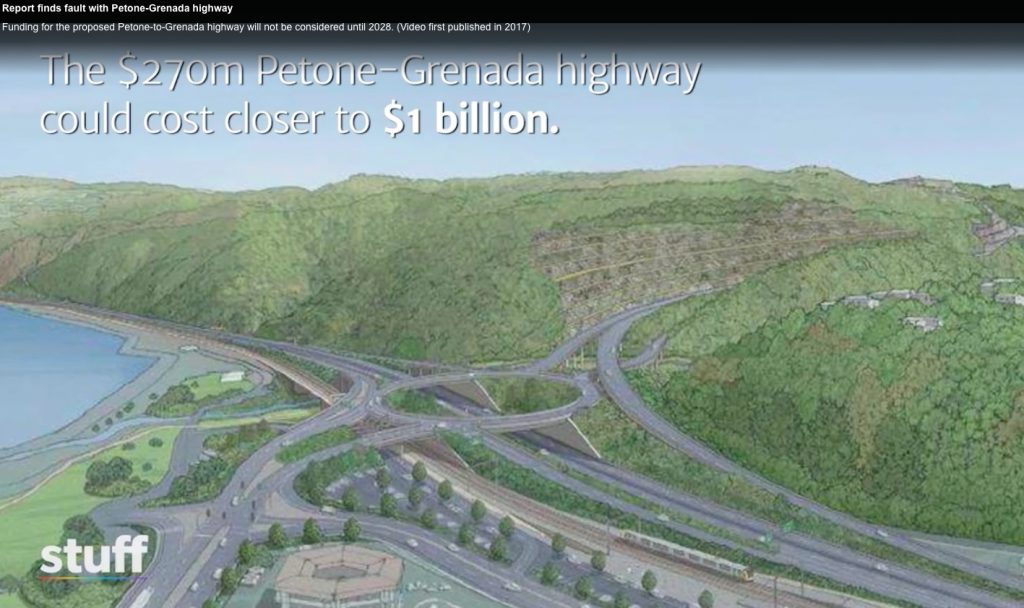
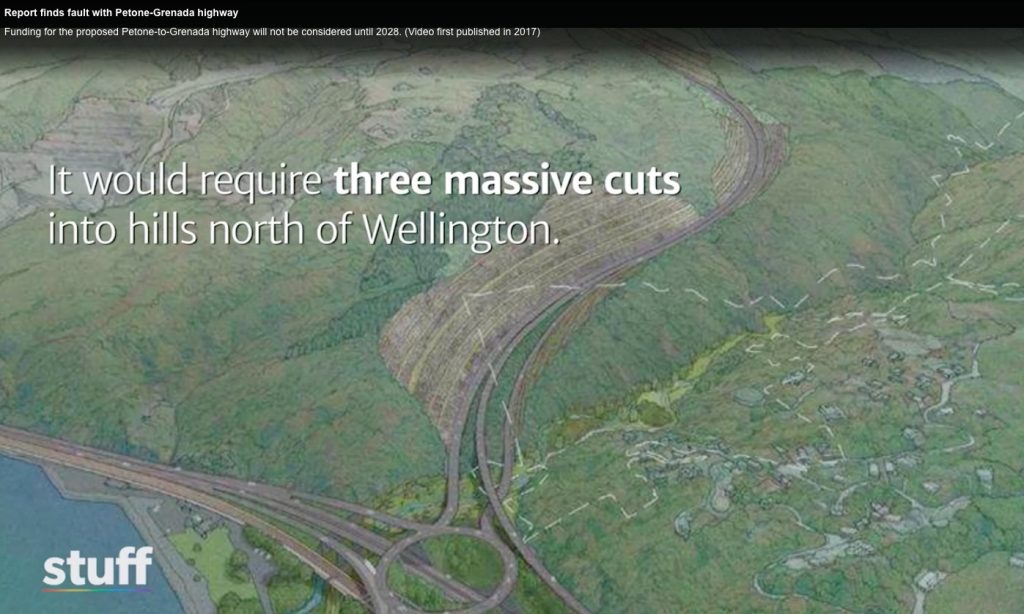

Leave a comment